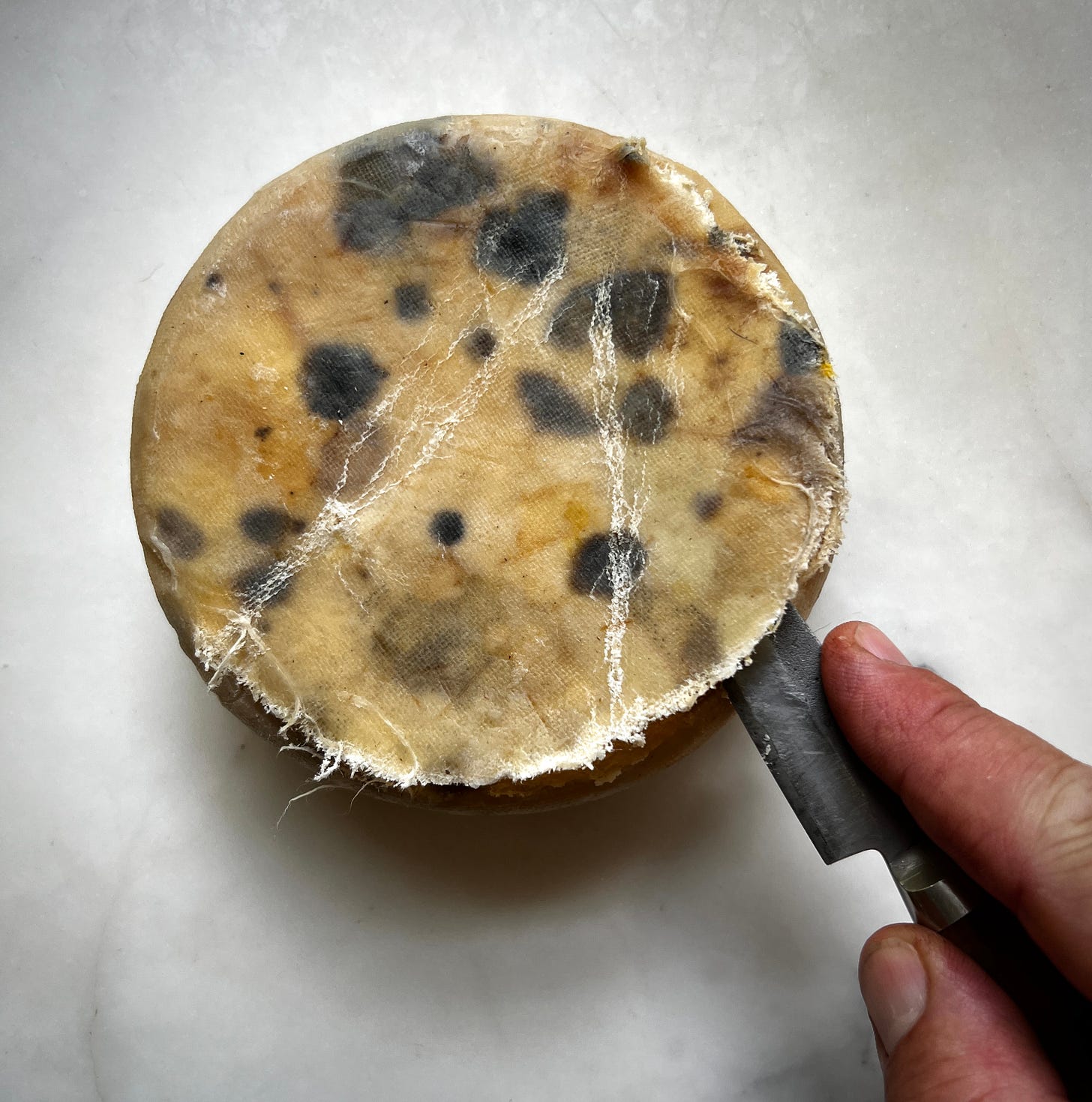Farmhouse cheddar, a two hundred year old recipe
For those frightened by mould, look away now.
The adventure started last December, whereby not being content with just straining fresh milk curds and eating them after a day in the fridge as ricotta, I challenged myself to go the whole hog and cellar a small truckle of cheddar for the best part of a year. The sort of thing that professional cheesemakers do, after spending years refining the art of affinage, but with the only hurdle being that I’m not a professional cheesemaker, and I’d not done this before.
Still. Needs must.
I’m very stubborn you see, and the thought of not being able to do something irritates me, so putting any hesitation aside, I drove to a local dairy farm to locate about eight litres of the creamiest milk I could find. To add a little frisson to the proceedings I decided this should be unpasteurised. Removing the last shred of safety net, a heat treatment that would likely prevent me from creating something potentially deadly, that might at the very least confine me to the loo for a few days.
The look on the dairyman’s face when I told him why I needed the equivalent of a large bucket of raw cow’s milk said enough to me to realise that I was being a little rash in my decision-making process.
Taking a pan of warm, fatty protein, adding bacteria (by way of a mesophilic culture that ferments the lactose in the milk, converting it to lactic acid), thus basically ensuring that the resulting cheese has enough good bacteria to more often than not eliminate anything potentially nasty. To then let this warm fresh cheese go mouldy, wrapped in a muslin cloth brushed with rendered pig fat for the best part of a year, is troubling at best. But I suppose when you’ve made saucisson, that unnatural act of stuffing raw meat and fat into intestines, then letting it go sour by fermenting it in a warm place for thirty-six hours, before putting it into a box to fundamentally go mouldy; if that terrifying prospect holds no fear for you, then perhaps you have a little more faith in the weird world of microbes than the uninitiated. In that case, confidently watching your cheeses go through a spectral rainbow of transformation, much like how my wife’s broken leg has changed from green to yellow to blue then black, the art of affinage should be no more troublesome than making marmalade.
Keep reading with a 7-day free trial
Subscribe to A Private Chef to keep reading this post and get 7 days of free access to the full post archives.




